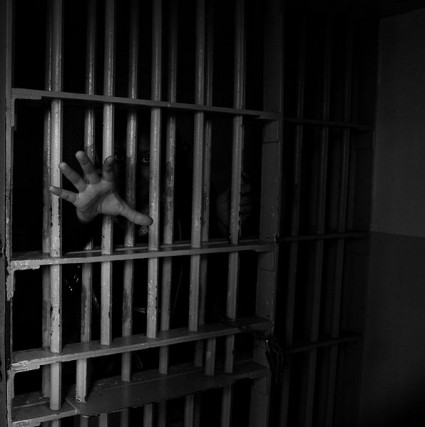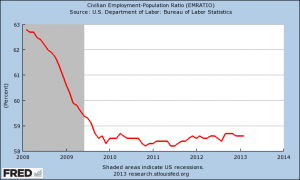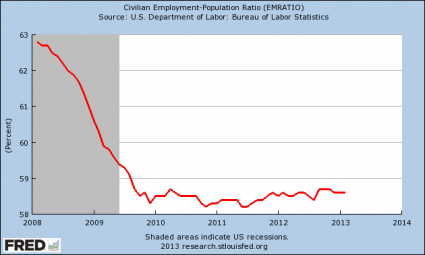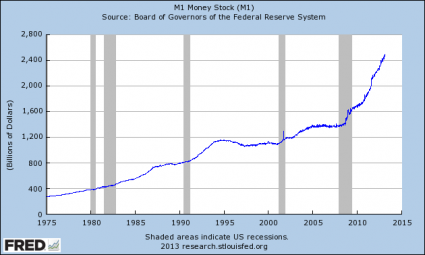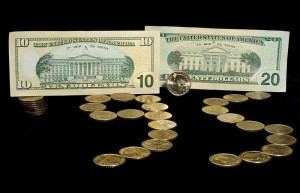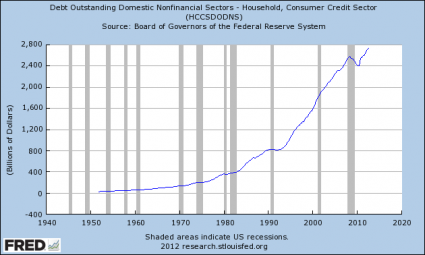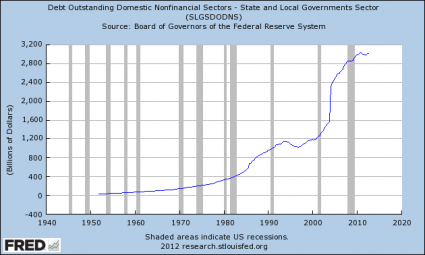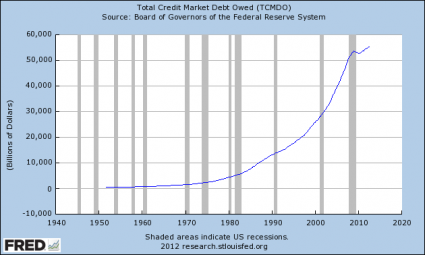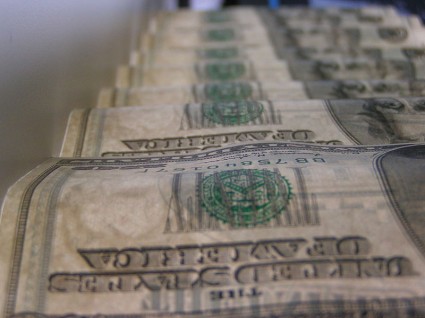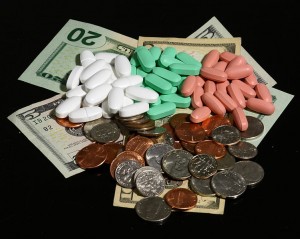 The U.S. health care system is a giant money making scam that is designed to drain as much money as possible out of all of us before we die. In the United States today, the health care industry is completely dominated by government bureaucrats, health insurance companies and pharmaceutical corporations. The pharmaceutical corporations spend billions of dollars to convince all of us to become dependent on their legal drugs, the health insurance companies make billions of dollars by providing as little health care as possible, and they both spend millions of dollars to make sure that our politicians in Washington D.C. keep the gravy train rolling. Meanwhile, large numbers of doctors are going broke and patients are not getting the care that they need. At this point, our health care system is a complete and total disaster. Health care costs continue to go up rapidly, the level of care that we are receiving continues to go down, and every move that our politicians make just seems to make all of our health care problems even worse. In America today, a single trip to the emergency room can easily cost you $100,000, and if you happen to get cancer you could end up with medical bills in excess of a million dollars. Even if you do have health insurance, there are usually limits on your coverage, and the truth is that just a single major illness is often enough to push most American families into bankruptcy. At the same time, hospital administrators, pharmaceutical corporations and health insurance company executives are absolutely swimming in huge mountains of cash. Unfortunately, this gigantic money making scam has become so large that it threatens to collapse both the U.S. health care system and the entire U.S. economy.
The U.S. health care system is a giant money making scam that is designed to drain as much money as possible out of all of us before we die. In the United States today, the health care industry is completely dominated by government bureaucrats, health insurance companies and pharmaceutical corporations. The pharmaceutical corporations spend billions of dollars to convince all of us to become dependent on their legal drugs, the health insurance companies make billions of dollars by providing as little health care as possible, and they both spend millions of dollars to make sure that our politicians in Washington D.C. keep the gravy train rolling. Meanwhile, large numbers of doctors are going broke and patients are not getting the care that they need. At this point, our health care system is a complete and total disaster. Health care costs continue to go up rapidly, the level of care that we are receiving continues to go down, and every move that our politicians make just seems to make all of our health care problems even worse. In America today, a single trip to the emergency room can easily cost you $100,000, and if you happen to get cancer you could end up with medical bills in excess of a million dollars. Even if you do have health insurance, there are usually limits on your coverage, and the truth is that just a single major illness is often enough to push most American families into bankruptcy. At the same time, hospital administrators, pharmaceutical corporations and health insurance company executives are absolutely swimming in huge mountains of cash. Unfortunately, this gigantic money making scam has become so large that it threatens to collapse both the U.S. health care system and the entire U.S. economy.
The following are 50 signs that the U.S. health care system is a massive money making scam that is about to collapse…
#1 Medical bills have become so ridiculously large that virtually nobody can afford them. Just check out the following short excerpt from a recent Time Magazine article. One man in California that had been diagnosed with cancer ran up nearly a million dollars in hospital bills before he died…
By the time Steven D. died at his home in Northern California the following November, he had lived for an additional 11 months. And Alice had collected bills totaling $902,452. The family’s first bill — for $348,000 — which arrived when Steven got home from the Seton Medical Center in Daly City, Calif., was full of all the usual chargemaster profit grabs: $18 each for 88 diabetes-test strips that Amazon sells in boxes of 50 for $27.85; $24 each for 19 niacin pills that are sold in drugstores for about a nickel apiece. There were also four boxes of sterile gauze pads for $77 each. None of that was considered part of what was provided in return for Seton’s facility charge for the intensive-care unit for two days at $13,225 a day, 12 days in the critical unit at $7,315 a day and one day in a standard room (all of which totaled $120,116 over 15 days). There was also $20,886 for CT scans and $24,251 for lab work.
#2 This year the American people will spend approximately 2.8 trillion dollars on health care, and it is being projected that Americans will spend 4.5 trillion dollars on health care in 2019.
#3 The United States spends more on health care than Japan, Germany, France, China, the U.K., Italy, Canada, Brazil, Spain and Australia combined.
#4 If the U.S. health care system was a country, it would be the 6th largest economy on the entire planet.
#5 Back in 1960, an average of $147 was spent per person on health care in the United States. By 2009, that number had skyrocketed to $8,086.
#6 Why does it cost so much to stay in a hospital today? It just does not make sense. Just check out these numbers…
In 1942, Christ Hospital, NJ charged $7 per day for a maternity room. Today it’s $1,360.
#7 Approximately 60 percent of all personal bankruptcies in the United States are related to medical bills.
#8 One study discovered that approximately 41 percent of all working age Americans either have medical bill problems or are currently paying off medical debt.
#9 The U.S. health care industry has spent more than 5 billion dollars on lobbying our politicians in Washington D.C. since 1998.
#10 According to the Association of American Medical Colleges, the U.S. is currently experiencing a shortage of at least 13,000 doctors. Unfortunately, that shortage is expected to grow to 130,000 doctors over the next 10 years.
#11 The state of Florida is already dealing with a very serious shortage of doctors…
Brace yourself for longer lines at the doctor’s office.
Whether you’re employed and insured, elderly and on Medicare, or poor and covered by Medicaid, the Florida Medical Association says there’s a growing shortage of doctors — especially specialists — available to provide you with medical care.
And if the Florida Legislature goes along with Gov. Rick Scott’s recommendation to offer Medicaid coverage to an additional 1 million Floridians — part of the Affordable Care Act that takes effect next January — the FMA says that shortage will only get worse.
#12 At this point, approximately 40 percent of all doctors in the United States are 55 years of age or older.
#13 In America today, many hospital executives make absolutely ridiculous amounts of money…
In December, when the New York Times ran a story about how a deficit deal might threaten hospital payments, Steven Safyer, chief executive of Montefiore Medical Center, a large nonprofit hospital system in the Bronx, complained, “There is no such thing as a cut to a provider that isn’t a cut to a beneficiary … This is not crying wolf.”
Actually, Safyer seems to be crying wolf to the tune of about $196.8 million, according to the hospital’s latest publicly available tax return. That was his hospital’s operating profit, according to its 2010 return. With $2.586 billion in revenue — of which 99.4% came from patient bills and 0.6% from fundraising events and other charitable contributions — Safyer’s business is more than six times as large as that of the Bronx’s most famous enterprise, the New York Yankees. Surely, without cutting services to beneficiaries, Safyer could cut what have to be some of the Bronx’s better non-Yankee salaries: his own, which was $4,065,000, or those of his chief financial officer ($3,243,000), his executive vice president ($2,220,000) or the head of his dental department ($1,798,000).
#14 Health insurance administration expenses account for 8 percent of all health care costs in the United States each year. In Finland, health insurance administration expenses account for just 2 percent of all health care costs each year.
#15 If you can believe it, the U.S. ambulance industry makes more money each year than the movie industry does.
#16 All over America, people are reporting huge health insurance premium increases thanks to Obamacare. The following example is from a recent article by Robert Wenzel…
A California small businessman tells me that he switched healthcare insurance carriers in 2012. The monthly premium for him and his wife was about $400, but when he received his first bill in January of this year it was for $1,200. He hasn’t been to a doctor in years, his wife has only gone for minor care.
Apparently there is some clause in the Affordable Healthcare Act that results in health insurance firms using a new method to calculate premiums. Those who have health insurance plans that have been in effect since at least 2010 are grandfathered under the old calculation method, but insurance carriers are using a new formula for new plans.
#17 Blue Shield of California has announced that it wants to raise health insurance premiums by up to 20 percent this year in an effort to keep up with rising health costs.
#18 Aetna’s CEO says that health insurance premiums for many Americans will double when the major provisions of Obamacare go into effect in 2014.
#19 Close to 10 percent of all U.S. employers plan to drop health coverage completely when the major provisions of Obamacare go into effect in 2014.
#20 According to a survey conducted by the Doctor Patient Medical Association, 83 percent of all doctors in the United States have considered leaving the profession because of Obamacare.
#21 Approximately 16,000 new IRS agents will be hired to help oversee the implementation of Obamacare, and the Obama administration has given the IRS 500 million extra dollars “outside the normal appropriations process” to help the IRS with their new duties.
#22 During 2013, Americans will spend more than 280 billion dollars on prescription drugs.
#23 Prescription drugs cost about 50% more in the United States than they do in other countries.
#24 In the United States today, prescription painkillers kill more Americans than heroin and cocaine combined.
#25 Nearly half of all Americans now use prescription drugs on a regular basis according to the CDC. Not only that, the CDC also says that approximately one-third of all Americans use two or more pharmaceutical drugs on a regular basis, and more than ten percent of all Americans use five or more pharmaceutical drugs on a regular basis.
#26 The percentage of women taking antidepressants in America is higher than in any other country in the world.
#27 In 2010, the average teen in the U.S. was taking 1.2 central nervous system drugs. Those are the kinds of drugs which treat conditions such as ADHD and depression.
#28 Children in the United States are three times more likely to be prescribed antidepressants as children in Europe are.
#29 There were more than two dozen pharmaceutical companies that made over a billion dollars in profits during 2008.
#30 According to the CDC, approximately three quarters of a million people a year are rushed to emergency rooms in the United States because of adverse reactions to pharmaceutical drugs.
#31 According to a report by Health Care for America Now, America’s five biggest for-profit health insurance companies ended 2009 with a combined profit of $12.2 billion.
#32 The top executives at the five largest for-profit health insurance companies in the United States combined to bring in nearly $200 million in total compensation for 2009.
#33 The chairman of Aetna, the third largest health insurance company in the United States, brought in a staggering $68.7 million during 2010. Ron Williams exercised stock options that were worth approximately $50.3 million and he raked in an additional $18.4 million in wages and other forms of compensation. The funny thing is that he left the company and didn’t even work the entire year.
#34 It turns out that the financial assistance that Barack Obama promised would be provided for those with “pre-existing conditions” under Obamacare is already being shut down because of a lack of funding…
Tens of thousands of Americans who cannot get health insurance because of preexisting medical problems will be blocked from a program designed to help them because funding is running low.
Obama administration officials said Friday that the state-based “high-risk pools” set up under the 2010 health-care law will be closed to new applicants as soon as Saturday and no later than March 2, depending on the state.
#35 In America today, you are 64 times more likely to be killed by a doctor than you are by a gun.
#36 People living in the United States are three times more likely to have diabetes than people living in the United Kingdom.
#37 Today, people living in Puerto Rico have a greater life expectancy than people living in the United States do.
#38 According to OECD statistics, Americans are twice as obese as Canadians are.
#39 Greece has twice as many hospital beds per person as the United States does.
#40 The state of California now ranks dead last out of all 50 states in the number of emergency rooms per million people.
#41 According to a doctor interviewed by Fox News, “a gunshot wound to the head, chest or abdomen” will cost $13,000 at his hospital the moment the victim comes in the door, and then there will be significant additional charges depending on how bad the wound is.
#42 It has been estimated that hospitals overcharge Americans by about 10 billion dollars every single year.
#43 One trained medical billing advocate says that over 90 percent of the medical bills that she has audited contain “gross overcharges“.
#44 It is not uncommon for insurance companies to get hospitals to knock their bills down by up to 95 percent, but if you are uninsured or you don’t know how the system works then you are out of luck.
#45 According to a study conducted by Deloitte Consulting, a whopping 875,000 Americans were “medical tourists” in 2010.
#46 Today, there are more than 56 million Americans on Medicaid, and it is being projected that Obamacare will add 16 million more Americans to the Medicaid rolls.
#47 Back in 1965, only one out of every 50 Americans was on Medicaid. Today, one out of every 6 Americans is on Medicaid.
#48 Today, there are more than 50 million Americans on Medicare, and that number is projected to grow to 73.2 million in 2025.
#49 When Medicare was first established by Congress, it was estimated that it would cost the federal government $12 billion a year by the time 1990 rolled around. Instead, it cost the federal government $110 billion in 1990, and it will cost the federal government close to $600 billion this year.
#50 Even if you do have health insurance, that is no guarantee that medical bills will not bankrupt you. Just check out what a recent Time Magazine article says happened to one unfortunate couple from Ohio that actually did have health insurance…
When Sean Recchi, a 42-year-old from Lancaster, Ohio, was told last March that he had non-Hodgkin’s lymphoma, his wife Stephanie knew she had to get him to MD Anderson Cancer Center in Houston. Stephanie’s father had been treated there 10 years earlier, and she and her family credited the doctors and nurses at MD Anderson with extending his life by at least eight years.
Because Stephanie and her husband had recently started their own small technology business, they were unable to buy comprehensive health insurance. For $469 a month, or about 20% of their income, they had been able to get only a policy that covered just $2,000 per day of any hospital costs. “We don’t take that kind of discount insurance,” said the woman at MD Anderson when Stephanie called to make an appointment for Sean.
Stephanie was then told by a billing clerk that the estimated cost of Sean’s visit — just to be examined for six days so a treatment plan could be devised — would be $48,900, due in advance.
By the way, that hospital down in Houston made a profit of 531 million dollars in one recent year.
So what can be done about all of this?
Well, the truth is that the status quo is a complete and total disaster, and every “solution” being promoted by politicians from both major political parties would only make things worse.
In the end, the U.S. health care system needs to be rebuilt from the ground up, but we all know that is not going to happen.
Instead, our politicians and the health care industry will just find additional ways to extract money from all of us, and the level of care that we all get will continue to decline.
If you don’t believe this, just check out what Paul Krugman of the New York Times had to say recently…
We’re going to need more revenue…Surely it will require some sort of middle class taxes as well.. We won’t be able to pay for the kind of government the society will want without some increase in taxes… on the middle class, maybe a value added tax…And we’re also going to have to make decisions about health care, doc pay for health care that has no demonstrated medical benefits . So the snarky version…which I shouldn’t even say because it will get me in trouble is death panels and sales taxes is how we do this.
Others are urging us to become more like Europe.
But do we really want what they have in the UK?…
Sick children are being discharged from NHS hospitals to die at home or in hospices on controversial ‘death pathways’.
Until now, end of life regime the Liverpool Care Pathway was thought to have involved only elderly and terminally-ill adults.
But the Mail can reveal the practice of withdrawing food and fluid by tube is being used on young patients as well as severely disabled newborn babies.
One doctor has admitted starving and dehydrating ten babies to death in the neonatal unit of one hospital alone.
Writing in a leading medical journal, the physician revealed the process can take an average of ten days during which a baby becomes ‘smaller and shrunken’.
In the end, my philosophy is just to avoid the U.S. health care system as much as possible. Most doctors are just trained to do two things – prescribe drugs and cut you open. In an emergency situation where you are about to die, those may be your best options, but otherwise I would just as soon avoid the gigantic money making scam that the U.S. health care industry has become.
But just don’t take my word for it. The following is some very sound advice from Dr. Robert S. Dotson…
Avoid contact with the existing health care system as far as possible. Yes, emergencies arise that require the help of physicians, but by and large one can learn to care for one’s own minor issues. Though it is flawed, the internet has been an information leveler for the masses and permits each person to be his or her own physician to a large degree. Take advantage of it! Educate yourself about your own body and learn to fuel and maintain it as you would an expensive auto or a pet poodle. One does not need a medical degree to:
1. avoid excessive use of tobacco or alcohol or, for that matter, caffeine;
2. avoid poisons like fluoride, aspartame, high fructose corn syrup, and addictive drugs (legal or illicit);
3. avoid unnecessary and potentially lethal imaging studies (TSA’s radiation pornbooths, excessive mammography, repetitive CT scans – exposure to all significantly increases cancer risk);
4. avoid excessive cell phone use and exposure to other forms of EMR pollution where possible (the NSA is recording everything you say and text anyway);
5. avoid daily fast food use and abuse (remember: pink slime and silicone) ;
6. avoid untested GM foods (do you really want to become “Roundup Ready?”):
7. avoid most vaccinations and pharmaceutical agents promoted by the establishment;
8. avoid risky behaviors (and, we do not need a bunch of Nanny State bureaucrats to define and police these);
9. exercise moderately;
10. get plenty of sleep;
11. drink plenty of good quality water (buy a decent water filter to remove fluoride, chloride, and heavy metals);
12. wear protective gear at work and play where appropriate (helmets, eye-shields, knee and elbow pads, etc.):
13. seek out locally-grown, whole, organic foods and support your local food producers;
14. take appropriate nutritional supplements (multi-vitamins, Vitamin C, Vitamin D3);
15. switch off the TV and the mainstream media it represents;
16. educate yourself while you can;
And, lastly…
17. QUESTION AUTHORITY!
Doing these simple, common-sense things will add healthy years to a person’s life and help one avoid most medical encounters during his or her allotted time on earth.
So what do you think?
Do you believe that the U.S. health care system is a gigantic money making scam that is about to collapse?
Please feel free to post a comment with your thoughts below…

 How would you describe an industry that wants to put more Americans in prison and keep them there longer so that it can make more money? In America today, approximately 130,000 people are locked up in private prisons that are being run by for-profit companies, and that number is growing very rapidly. Overall, the U.S. has approximately 25 percent of the entire global prison population even though it only has 5 percent of the total global population. The United States has the highest incarceration rate on the entire globe by far, and no nation in the history of the world has ever locked up more of its own citizens than we have. Are we really such a cesspool of filth and decay that we need to lock up so many of our own people? Or are there some other factors at work? Could part of the problem be that we have allowed companies to lock up men and women in cages for profit? The two largest private prison companies combined to bring in close to $3,000,000,000 in revenue in 2010, and the largest private prison companies have spent tens of millions of dollars on lobbying and campaign contributions over the past decade. Putting Americans behind bars has become very big business, and those companies have been given a perverse incentive to push for even more Americans to be locked up. It is a system that is absolutely teeming with corruption, and it is going to get a lot worse unless someone does something about it.
How would you describe an industry that wants to put more Americans in prison and keep them there longer so that it can make more money? In America today, approximately 130,000 people are locked up in private prisons that are being run by for-profit companies, and that number is growing very rapidly. Overall, the U.S. has approximately 25 percent of the entire global prison population even though it only has 5 percent of the total global population. The United States has the highest incarceration rate on the entire globe by far, and no nation in the history of the world has ever locked up more of its own citizens than we have. Are we really such a cesspool of filth and decay that we need to lock up so many of our own people? Or are there some other factors at work? Could part of the problem be that we have allowed companies to lock up men and women in cages for profit? The two largest private prison companies combined to bring in close to $3,000,000,000 in revenue in 2010, and the largest private prison companies have spent tens of millions of dollars on lobbying and campaign contributions over the past decade. Putting Americans behind bars has become very big business, and those companies have been given a perverse incentive to push for even more Americans to be locked up. It is a system that is absolutely teeming with corruption, and it is going to get a lot worse unless someone does something about it.